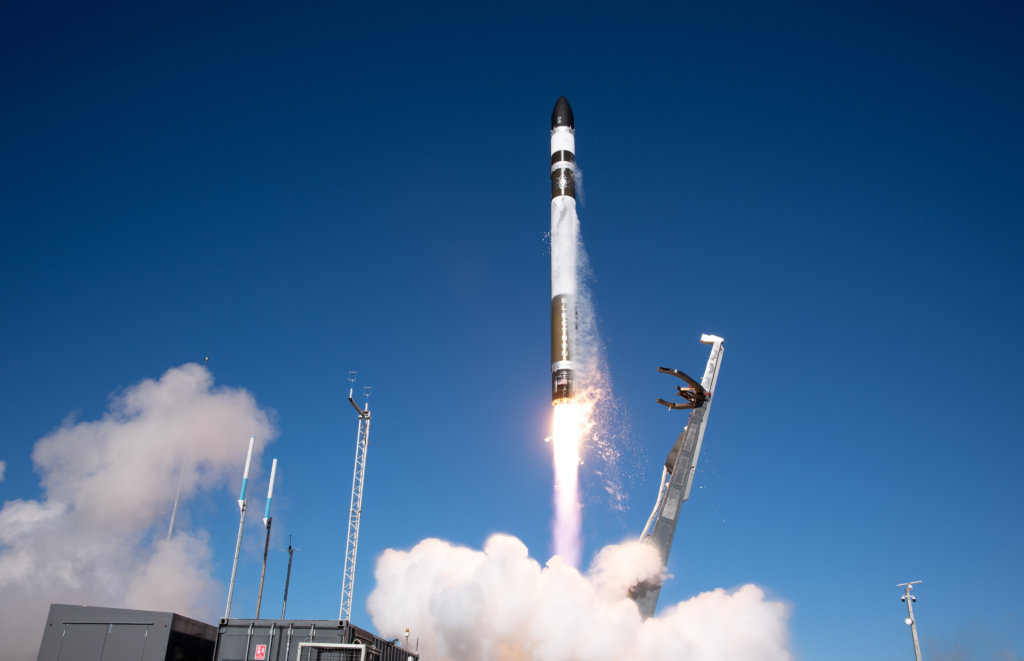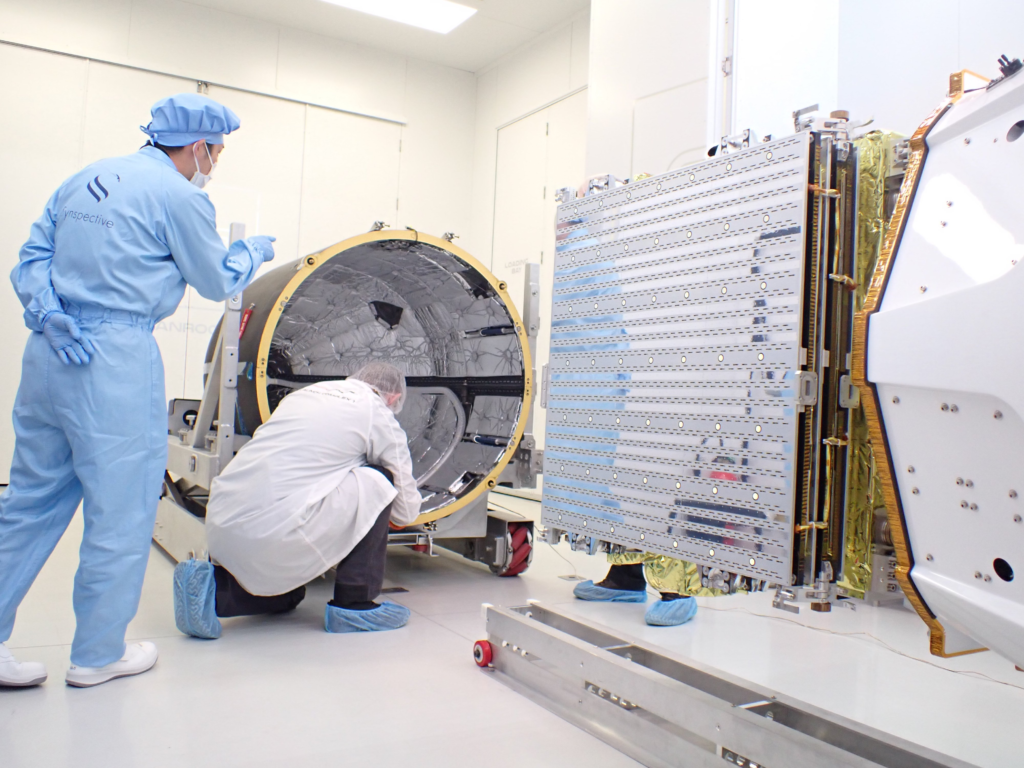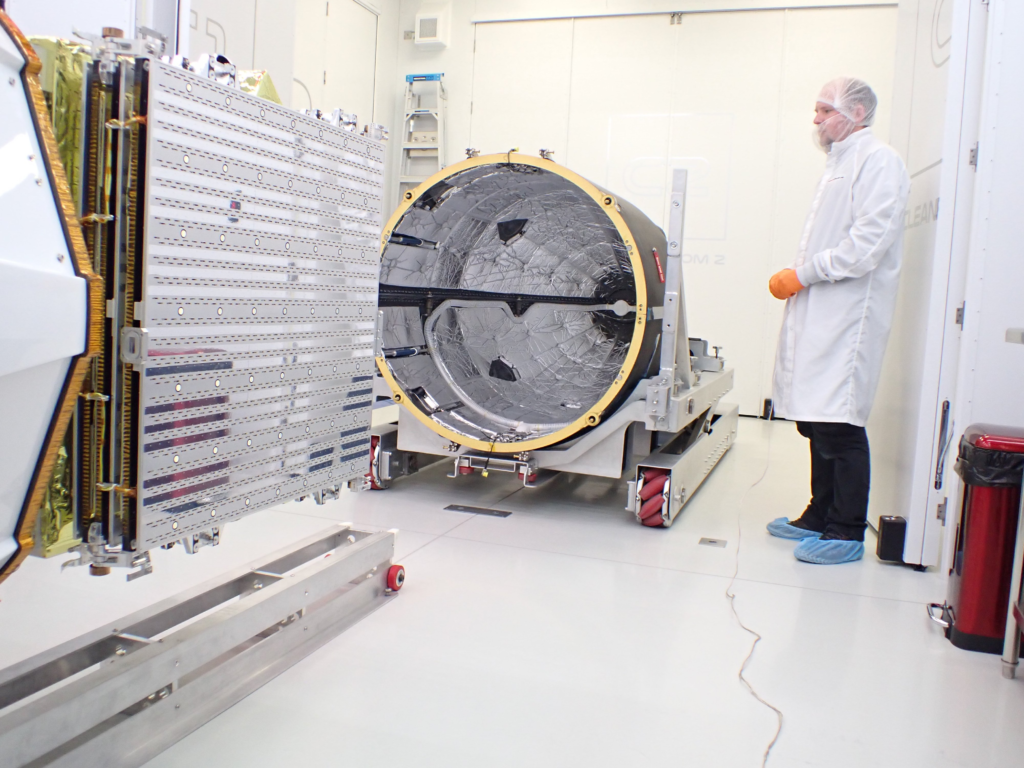
Rocket Lab’s Next Launch Marks Multiple Milestones
Electron is Rocket Lab’s small-lift launch vehicle responsible for the company’s current success and consistent launch record. Over the past few years, the company has been working to improve this rocket in more ways than one. However, in order to improve a launch system, you need to continue using it and testing what’s possible.
In just 3 days Rocket Lab has another Electron launch scheduled as part of the mission named, The Owl Spreads Its Wings. What’s so special about this launch is the different milestones it marks for both Rocket Lab and the Electron launch vehicle itself. This mission will be Electron’s 30th launch carrying the 300th Rutherford engine and 150th satellite flown to space. A testament to the company’s launch service and goal.
Not to mention a very interesting satellite from Synspective capable of gathering high resolution Earth observation data regardless of conditions or daylight, offering a resource for the purposes of urban development, infrastructure monitoring, and disaster response, just to name a few. Here I will go more in-depth into this upcoming mission, why it’s so special, the satellite onboard, and more.
Rocket Lab Milestones

The last few weeks have been full of updates from Rocket Lab regarding their next mission set to lift off just 3 days from now on the 14th. It began on August 31st when the company tweeted saying, “Successful wet dress rehearsal at Launch Complex 1 for our 30th Electron! This rocket will launch our next mission for @synspective – our 150th satellite – during a launch window opening Sept 14. Most recently, only days ago, the company responsible for the satellite tweeted mentioning, “The final touches have been completed! StriX-1 is ready for take off with @RocketLab!” This included some images within the cleanroom of the payload being loaded within Electron’s fairings.
“The Owl Spreads Its Wings” is the second mission in a three-launch contract from Synspective, following on from “The Owl’s Night Continues” earlier this year, which likewise made another first as the inaugural launch from the new Pad B at Launch Complex 1. The two previous missions for Synspective – “The Owl’s Night Begins” in December 2020 and “The Owl’s Night Continues” in February 2022 – carried their StriX-series satellites. These Synthetic Aperture Radar (SAR) satellites can gather high resolution Earth observation data at any time, providing invaluable data to the company for a variety of applications. What’s also interesting about this mission is as with all the StriX satellites Rocket Lab has launched for Synspective, Electron’s payload fairing was custom designed with small domes to allow for the size of the satellite. The image of the satellite being loaded into the fairing is a great example of how big it really is and why some adjustments were necessary.
However, what really makes this mission special for Rocket Lab is all the different milestones it marks. Rocket Lab highlights that this upcoming mission marks the 30th Electron launch, further reinforcing a track record of reliability and responsiveness. Over 30 launches, Electron as a launch vehicle has become one of the most reliable launch vehicles available globally, as well as evolving to carry twice the payload mass and perform beyond original parameters – which proved particularly important in the recent CAPSTONE mission to the Moon. With 30 launches under its belt from Launch Complex 1 in Mahia, New Zealand, and the first slated for Launch Complex 2 in Virginia later this year, Electron has managed to establish its role as a workhorse for small launch and making space accessible for all. Not to mention an upcoming booster catch attempt later this year. Even five years after Electron’s first launch, the company is still actively working to improve the launch system in unique ways.
The next big milestone has to do with the amount of satellites that have been successfully launched and deployed in space. Over those 30 launches, Rocket Lab has successfully delivered dozens of satellites to orbit and, more recently, to the wider solar system. The satellites they’ve launched to date include Earth observation and weather monitoring, support and disaster relief, connectivity and better management of air traffic and public safety, science and research, national security, and more. Rocket Lab points out that with a vision to make launch as straightforward as Earth-based logistics, the delivery of the 150th satellite by Electron is a key metric in establishing this consistency of service.
The final milestone that Rocket Lab is excited about revolves around the engine making all these launches possible. Each Electron vehicle carries 11 engines across three stages – 9 sea-level Rutherford Engines on the first stage, 1 space-optimized Rutherford Engine on the second stage, and the smaller Curie engine on the Kick Stage that circularises the orbit needed to deliver its payload to a very precise location in space. With the celebration of Electron’s 30th launch, Rocket Lab also celebrates the 300th Rutherford Engine that will fly past the Karman line into space – yet another measure of the reliability and success of the Electron launch program. With the first recovered Rutherford Engine successfully passing its first hot-fire test in recent days, and Rocket Lab’s Neutron program well into development, Electron has set the standard for resilient, agile launch capability. Specifically, earlier this month Rocket Lab reported about a Rutherford engine that was recovered during the first official booster catch attempt. Even though the rocket was dropped into the water, the company reported successful testing of the engine. A great sign as they continue to try and make Electron a partially reusable launch vehicle.
Synspective Satellite

Now that we know more about why this upcoming launch is so special for Rocket Lab, we can take a closer look at the satellites being deployed, and the goal of the mission. In regards to this mission, CEO of Rocket Lab, Peter Beck pointed out, “From launching Synspective’s first demonstration spacecraft to now helping to build their SAR constellation with this launch of their first commercial StriX satellite, it’s an honor to once again be the trusted launch partner for Synspective. As the sole payload on this dedicated Electron launch, Synspective is able to build their constellation to a specific Local Time of the Ascending Node that couldn’t be achieved if StriX was launched on a rideshare mission with other satellites – a highly important differentiator when building a new satellite constellation.”
Synspective’s third SAR satellite, StriX-1, follows on from StriX-α and StriX-β which were launched in December 2021 and March 2022 with Rocket Lab, respectively. Unlike the previous two satellites, which are classified as demonstration satellites, StriX-1 is Synspective’s first pre-commercial satellite for full-scale business expansion. This is in anticipation of the production and operation of multiple satellites in the future, with improved batteries and faster downlink speeds to capture more data and meet the needs of a wide range of customers from government to the private sector. In addition, following StriX-1, they plan to put three more satellites into orbit by the end of 2023. Expected to bring them closer to a planned constellation of 30 satellites for 2026 to enable wide-area, high-frequency Earth observation.
In terms of Earth observation, the StriX satellite can target data with a ground resolution of 1-3m, single polarized, and a swath width of more than 10-30km. The StriX observation modes are Stripmap and Sliding Spotlight mode and each satellite has a SAR antenna that is 5 meters in length and stowed during launch. The simple design of the satellites allows for affordable development of the constellation. The Synthetic Aperture Radar sends microwaves from the satellite to Earth and receives the reflected signal to create an image of the target area. What’s so impressive about this is the fact that the observation by the SAR enables twenty-four hour monitoring, even with cloud coverage, when optical earth observation satellites are less effective. The StriX satellites use X-band for precise monitoring. These features are suitable for the monitoring of the cities and infrastructures that are Synspective’s primary targets.
The company highlights that they are eager to work with people who share enthusiasm for their product, value Synspective’s expertise, and vision in establishing the SAR satellite ecosystem. They understand and realize their customer’s needs by utilizing agile development with the support of partner companies, government agencies, and universities. Synspective needs broad areas of expertise in order to realize the quality of its services. All of which comes back to Rocket Lab and this quite special launch set to take off in only 3 days from now.
Conclusion
Rocket Lab has made some very impressive progress since the first Electron launch over 5 years ago in 2017. The Electron launch vehicle has been flying for more than half a decade yet the company is still working to improve the rocket. This is one of the reasons Rocket Lab has managed to have so much success over time. We will have to wait and see how it progresses and the impact it has on the space industry.
